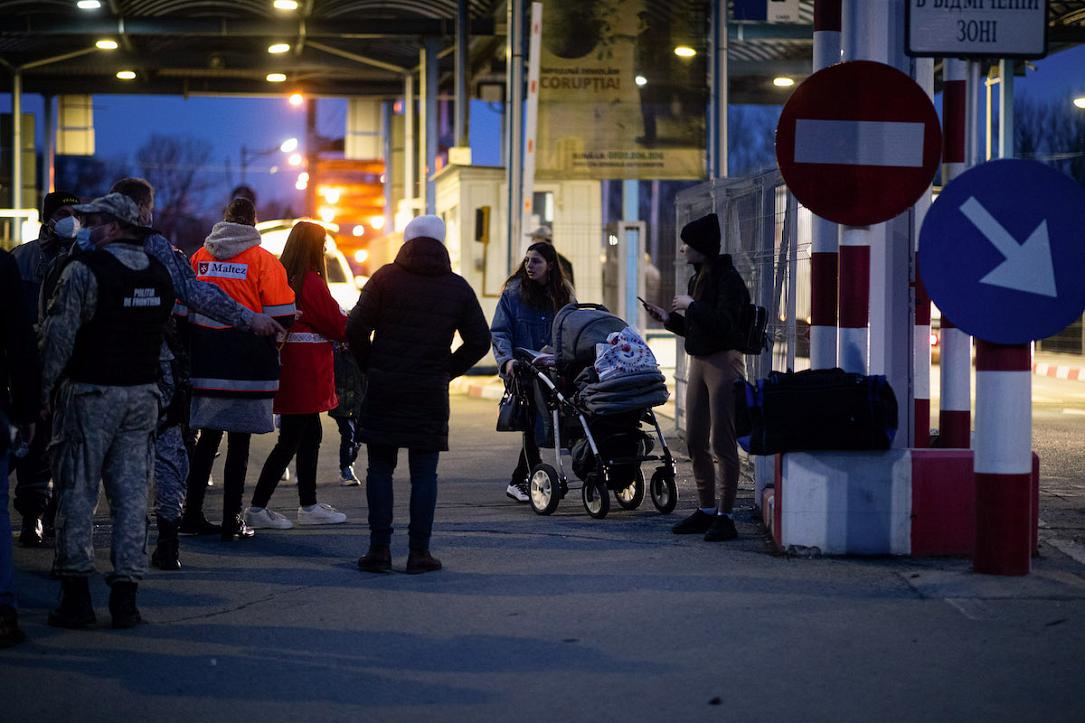Romania welcomes Ukrainian refugees: Short guide to entry rules, asylum regulations & what to expect at the border



Several crossing points are open at the border between Romania and Ukraine: Halmeu/Dyakovo, Sighetu Marmației/Solotvino, Siret/Porubne, and Isaccea/Orlivka (ferry crossing). It is also possible to enter Romania via the Republic of Moldova. A map of the border points and real-time waiting times can be checked on the website of the Romanian Border Police - here.
In these past few days, the border points at Sighetu Marmatiei and Siret have been the most used by Ukrainian refugees.
Ukrainian citizens can enter Romania with a short stay status by presenting a biometric or simple passport at the Romanian border crossing point. Those who apply for asylum in Romania can also enter the country based on another type of identity document (national ID card, birth certificate, etc.) or on the basis of the declared identity, without an identity document, for humanitarian reasons.
Ukrainians traveling with children should also carry an identity document of the minor or a birth certificate. Unaccompanied children can also cross the Romanian border from Ukraine.
Refugees are also welcome with their pets. Romania’s National Sanitary Veterinary and Food Safety Authority (ANSVSA) has granted a temporary derogation from the observance of certain rules for the entry of pets from Ukraine on the national territory.
Ukrainian citizens are exempted from quarantine regardless of whether they arrive directly from Ukraine or transit through the Republic of Moldova.
The asylum application can be submitted by any foreign citizen directly at the border crossing point or later at other points on the territory of Romania. The authorities competent to receive an application for asylum are the General Inspectorate for Immigration, the Border Police, most of the police stations across the country, and the National Administration of Penitentiaries.
The asylum seeker has to submit all the documents at their disposal that are relevant to their personal situation, including the passport and will receive the temporary identity document for asylum seekers, issued by the General Immigration Inspectorate.
During the asylum procedure, foreign citizens have the right to remain on the territory of Romania and are protected against expulsion, extradition, forced return from the border, or the territory of the Romanian state.
It usually takes one to two months to be offered refugee status. Those seeking asylum in Romania can’t leave the country while their asylum claim is processed.
For further information about the asylum procedures, foreign citizens can contact the Romanian National Council for Refugees (CNRR) here.
If you need further assistance or information, you can also call:
The Romanian Border Police - +40 021.9590
The General Inspectorate for Immigration - +40 021.410.75.13
The Emergency Number - 112
The number of emergencies related to children (including for children without families) - 119
Further information is available on the Romanian government website - here and on the Dopomoha.ro platform developed by Code for Romania - here.
Many Romanians, NGOs and companies have reacted almost immediately to the military situation in Ukraine, rushing to start donation campaigns or other initiatives aimed at helping the refugees looking for safety in Romania. They’ve been collecting food, clothes, blankets, essential goods, baby products, medicines, and other useful items, which they’ve taken to the Siret and Sighetu Marmatiei border points. So, refugees arriving at these points will for sure receive help from volunteers or representatives of official institutions.
Moreover, private companies and even individuals have been offering transport to Ukrainian citizens at Vama Siret who wanted to get to bus stations, train stations, or the airport, free of charge. One such example is the international transport company Romfour, which said it offers free bus rides to Ukrainian citizens arriving at the Siret customs point who want to get to bus or train stations. They can also transport refugees to Italy free of charge (every Friday) and offer discounts on other international routes (such as France or Germany).
Plus, the volunteers at the border are also helping the refugees find accommodation.
We’ve listed such initiatives in two articles:
Solidarity with Ukraine: How you can help refugees coming to Romania & where to donate
irina.marica@romania-insider.com
(Opening photo: Ukrainian refugees arriving at the Sighetu Marmatiei border point; photo credit: Inquam Photos/Virgil Simonescu)